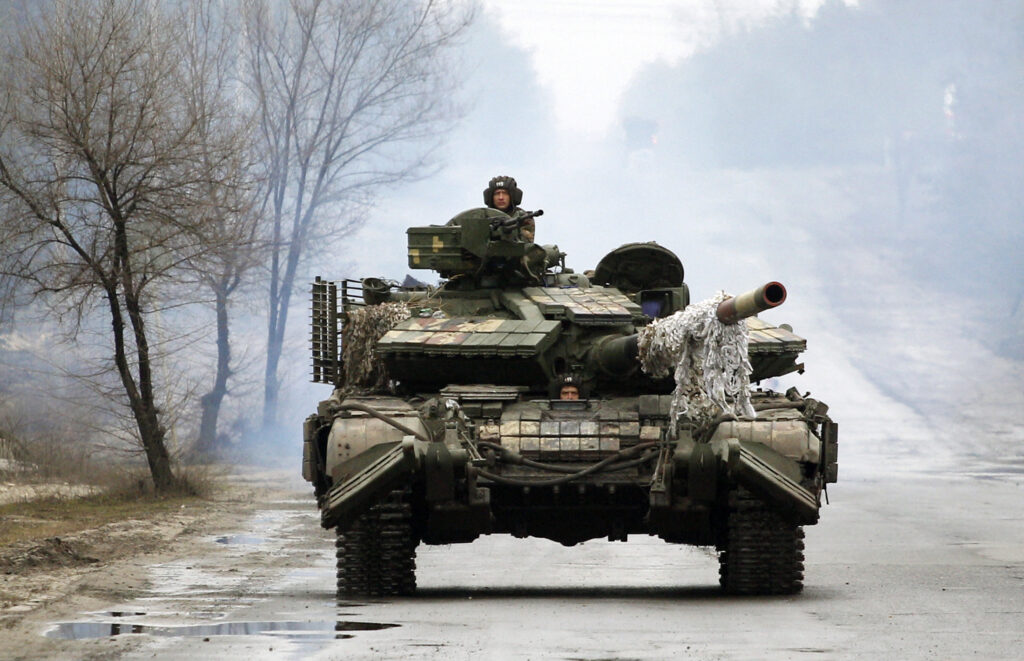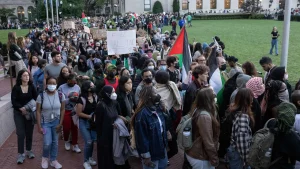Without attempting to make an exhaustive analysis of the evolution of the war in Ukraine, it is useful to consider the most probable scenarios and questions that could define the course of the war as it enters its second year. We’ll begin with two general definitions.
First, despite the underlying logic and threats of escalation, the war is still confined to Ukrainian territory. However, as the involvement of the United States and NATO powers in the conflict deepens, the risk of further escalation — whether it is by intended military action or an accident — grows as the war drags on.
Following an incremental logic so as not to provoke Russia and compromise its own position, NATO has agreed to provide Zelenskyy with more and better weapons. After months of refusal, Germany has agreed to send its Leopard tanks to Ukraine, and the United States is sending Abrams tanks — but they do so while being careful not to cross the thin line that could lead them to open military conflict with Russia, specifically the provision of not sending weapons and ammunition capable of reaching Russian territory. For now, Biden has refused to deliver F16 fighter jets to the Ukrainian army; however, several analysts speculate that if he continues down the same road, sooner or later, he will end up accepting Zelenskyy’s pleas and sending these types of weapons.
In short, the international dimension of the war is central. In addition to providing military aid, the Western powers are waging an “economic war” through sanctions imposed on Russia. But for the present moment, we are no longer looking at the scenario of a “Third World War.” This is not to underestimate the fact that the war in Ukraine is qualitatively different from the type of asymmetric war waged by the United States (and its allies) in previous periods, such as the Iraq and Afghanistan wars. The involvement of the great traditional imperialist powers and emerging powers — with the United States and NATO on one side and China and Russia and their various allies on the other — in the conflict shows the potential outlines of future confrontations in the global dispute for hegemony.
The second definition is that despite the fact that the war involves two major nuclear powers — the United States and Russia — and a rhetoric of escalation and threats, so far, the Ukrainian war remains a “conventional war.” Putin has made indirect allusions to the use of unconventional weapons and more recently suspended Russian participation in the New START Treaty (without abandoning the treaty altogether, the last remaining U.S.-Russia nuclear arms reduction agreement). In this scenario, the nuclear risk cannot be ruled out; even some “realist” theorists, such as John Mearsheimer, speculate that Putin could use tactical nuclear weapons against Ukrainian troops if he were cornered in Crimea, for example. However, today, “nuclear Armageddon” does not seem to be in the political interest of any of those involved.
From a military strategy point of view, the war so far can be divided into two stages that reflect the shifts of the Kremlin’s objectives in the war. The first stage was Russia’s attempted “blitzkrieg” tactic with the supposed aim of forcing the fall of Volodymyr Zelenskyy’s pro-Western government and replacing it with one friendlier to Russian interests. After the failure to achieve these goals, Russia opened a second phase characterized by a brutal “war of positions” concentrated in the Donbas region, east of the Dnieper river. This phase continues, with different conjunctures, as the war enters its second year.
What this first year of the war has shown is that Russia’s territorial conquests are unstable and proving difficult to defend, revealing important vulnerabilities and logistical problems in Russia’s army. Since the last Ukrainian counteroffensive and the withdrawal of Russian troops from the city of Kherson in November 2022, Russia seems to have stabilized its occupation to some extent and now defends the occupation of 18-20% of Ukrainian territory. This includes Crimea (annexed in 2014), Russian-speaking regions of the Donbas, and the city of Mariupol, which has been reduced to ruins, although it retains strategic value as a bridge between the territories under Russian control and access to the Sea of Azov.
At the present juncture, the Russian army is on the offensive, waging a bloody battle to take control of the city of Bakhmut. Several military analysts speak of a “spring offensive,” which in the Russian case has already begun, while on the Ukrainian side, the next phase of the war will begin with the arrival of tanks and ammunition from the Western powers. But there is wide agreement that these moves are unlikely to immediately change the course of the war, such as ensuring a victory for one side or precipitating negotiations. Therefore, although all hypotheses are provisional, the most probable scenario seems to be that of a prolonged war of attrition from which, for the time being, everyone is profiting.
For both the Russian side and the Ukrainian/NATO sides, it seems that, at the current conjuncture, the cost of continuing the war is less than the prospect of what either side stands to lose in a peace agreement. That said, clearly Ukraine is in the worst position because the war is being waged on its territory, which entails significant destruction of civilian infrastructure and a collapse of its economy.
For Putin, the outcome of the Ukrainian war is an existential question akin to the war against Napoleon and Nazi Germany. For Zelenskyy, only a return to the Ukrainian borders of 1991 would be acceptable, including the recovery of the Donbas and Crimea.
In public, Biden and the leaders of the Western powers maintain that “Ukraine can win,” but behind closed doors, several have acknowledged that this is an unrealistic goal and that the time is approaching for Zelenskyy to accept that it may be necessary to make certain concessions. These discussions of the situation on the ground, beyond triumphalist speeches, were central in the Munich Security Conference in which the consensus of the main imperialist powers and suppliers of armaments for Ukraine was that those armaments, rather than being used to recover territory from Russia, should be used to sustain an offensive to improve the Ukrainian position, keeping in mind that time is not on Zelenskyy’s side.
Beyond these discussions, it is clear that the United States leads the Western “anti-Russian” alliance. And for now, Biden has reasserted that prolonging the war is good business. Externally, the war functions to aid in the recomposition of U.S. hegemony over its traditional allies, though contradictorily, this process has also shown the extent to which the United States’ leadership has been weakened beyond the “West” in the most recent period.
Domestically, aid to Ukraine (limited to material support without sending troops) continues to enjoy a preponderant consensus in public opinion (though this is subject to change as the war continues). The military industrial complex is celebrating the profits it is making off of the sales of arms and ammunition. For now, the Republican Party now largely supports the war, though a vocal minority of the extreme right opposes it. In relative terms, the costs of supporting the war is a pittance compared to the cost in “blood and treasure” of direct military action against Russia.
NATO, which French president Emmanuel Macron said had become “brain dead” after President Donald Trump’s whirlwind isolationism, has recovered and regained internal cohesion, although cracks and divisions between states persist, particularly within Eastern Europe. The milder-than-expected winter helped to mask the energy crisis and contain inflation.
The United States has restored its hegemony over Europe, particularly over Germany, which has aligned itself with Washington’s objectives even if it has compromised its national interests. It’s no secret that under the government of Angela Merkel, Germany had made a Faustian bargain with Putin: Russia would provide cheap energy to feed the European country’s machinery. With the war in Ukraine and pressure from the United States, Germany saw itself obligated to cancel the Nord Stream I and II pipelines (in fact, according to journalist Seymour Hersh, it was the United States. that sabotaged them). To a significant degree, Biden is considered to be the architect of the German “Zeitenwende,” or “epochal tectonic shift” towards militarism,although it is not lost on anyone that this German turn poses contradictions in the medium (and perhaps shorter) term.
However, this recomposition of leadership is not enough to reverse the tendency of U.S. imperialism’s hegemonic decline, which is expressed in the limits highlighted by the war itself. In a certain sense, “the West” today is a geopolitical and military entity comprising the United States, Europe, Japan, Australia, and South Korea. This world is very different from that of the immediate post-Cold War period in which China emerged as a main competitor, Russia questioned the “liberal order,” and a series of regional powers had a certain ability to act according to their interests.
This has led some analysts to speak of the emergence of a new “non-aligned movement,” although the analogy doesn’t seem appropriate, especially considering that, in contrast to the Cold War, most countries have developed a “cross-dependence” on the United States, China, and Russia, and thus change their positions and manage their alignments according to their economic, security, or political interests. This makes it difficult to form a permanent bloc with recognized leadership.
On the other side is a less consolidated and more fluid “block under construction,” which has an alliance between Russia and China at its core. This bloc has acted as a pole of attraction for several “emerging” countries of the so-called “Global South,” including regional powers like India; a large part of Africa, Asia, and Latin America (including Brazil and Mexico); and even historical allies like Saudi Arabia (and even Israel), which, due to various national interests — not always convergent — has not aligned itself with the United States in UN votes.
China supports Russia, but publicly feigns neutrality. So far, it has not supported Putin to the same degree as the NATO bloc has done for Ukraine. However, Chinese diplomat Wang Yi’s recent visit to Moscow — which coincided with Biden’s trip to Kyiv and Warsaw — could be signaling a shift toward closer collaboration between the two countries.
Although these analysts’ comparison to the Non-Aligned Movement seems inappropriate, the relationship between Russia and China alleviated the effects of western sanctions against Russia and limited the impacts of the international isolation that the United States sought to impose. China and India largely replaced European markets by absorbing a large part of Russian oil and gas exports. South Africa hosted jointed naval military exercises with Russia and China — on the anniversary of the Ukrainian war, no less. In the first month and a half of 2023, nine Asian and African countries officially visited Russia.
How Has the Left Positioned Itself?
If, to paraphrase Prussian military theorist Carl von Clausewitz, war is the continuation of politics by military means, the war in Ukraine is a reactionary war. Putin’s invasion of Ukraine and denial of the country’s right to exist — Putin argued that Ukraine was an invention of Lenin and the Bolsheviks — is absolutely reactionary. The Russian president heads an authoritarian and despotic regime in the service of the oligarchs in his inner circle, which prevents workers’ independent and democratic organization and persecutes and imprisons those who oppose the war in Ukraine. With this war, he seeks, at the very least, to restore a geopolitical status of “great power” for the benefit of Russian capitalism. Based on western powers’ encirclement of Russia and the advance of NATO, a sector of the Left believes that since China and Russia oppose U.S. hegemony and advocate a “multipolar world order,” these countries are anti-imperialist. But this leftist defense of “multipolarity” is the basis of a “campist” position that translates to support for Russia and, in fact, for a capitalist bloc led by China that seeks to emerge as a power, deepening its imperialist traits.
The Ukrainian government, meanwhile, is completely aligned with the United States, EU, and NATO. Its policy is to transform the country into a vassal state of the United States and EU rather than of Russia. This bloc’s guiding policy is not “Ukrainian national self-determination,” as claimed by a sector of the Left that has aligned itself with this imperialist-led bloc and demands more weapons for Ukraine. The United States is manipulating the Ukrainian national question in its favor, and is arming Ukraine to consolidate the United States’ hegemony, weaken its competitors, and enlist a bloc for its conflict with China. Therefore the triumph of this bloc would strengthen the United States and the western alliance.
The alternative to positions like those of the “NATO” Left or the “capitalist multipolarity” Left is to confront the war and the militarism of the imperialist powers — which predict future wars and confrontations — from an internationalist and socialist perspective. Against the Russian invasion and NATO, we raise the perspective of an independent and socialist Ukraine, and of the international unity of the working class. This perspective is increasingly crucial at a time when important working-class sectors are mobilizing, particularly in central countries like Great Britain and France, which to a large extent face in the streets the consequences of the war.
Originally published on February 26 in Ideas de Izquierda.
Translation by Madeleine Freeman and Otto Fors











